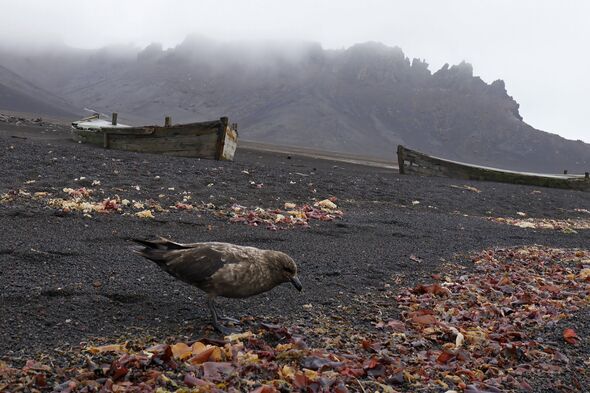An eerie island in the South Shetlands has been largely abandoned for decades after a catastrophic event forced its inhabitants to flee.
Deception Island in the Drake Passage, off the Antarctic Peninsula, was once a hub for whaling and scientific research.
The peninsula was first discovered by an English vessel in 1819. It was then visited by Nathaniel Palmer, an American sealer, who dubbed it “Deception Island” because though it appeared to be an island, closer inspection revealed it to be technically a ring around a flooded caldera.
The island was formally declared under British control in 1908 and postal services were established, alongside a magistrate and customs officer, The Sun reports.
The whaling industry thrived there for two decades until hunters left in 1931 as the price of whale oil was falling, and scientists from Chile and Britain set up research stations there.
But beneath the island’s peaceful facade lay a terrifying secret – it is an active volcano. The island’s distinctive horseshoe shape was in fact the result of a violent eruption that occurred 10,000 years ago.
Seismic events had occurred throughout its history but it wasn’t until the late 1960s that people were forced to leave the area for their safety.
An eruption in 1967 saw both the British and Chilean researchers escape unharmed. The British team decided to return but were forced to leave once again when another eruption struck two years later.
Many buildings were destroyed in 1969 blast, though some, like the old accommodation block, as well as rotting barrels, whaleboats and whale bones, remain as a reminder of the island’s unique story.
The island has been referred to as the “Polar Pompeii” due to comparisons with the eruption of Mount Vesuvius in 79AD, which devastated the ancient Roman city in southern Italy. Scientists estimate around 2,000 people in the city died, while 300 more are known to have lost their lives in neighbouring Herculaneum – though it is thought the death toll could have been far larger.
There’s also a surprising relic of its aviation history. In 1928, the island saw the first powered flight in Antarctica, when Australian pilot Wilkins took off in a Lockheed Vega 1 monoplane from a beach airstrip. An old aircraft hanger remains to this day.
It’s now a popular tourist destination, reportedly seeing around 15,000 visitors per year, and boasts stunning glaciers hot springs and dotted with intriguing remains of its whaling infrastructure.
These days penguins are by far the largest population. Bailey Head, an area on the east of the island, has almost 400,000 chinstrap penguins, the world’s largest colony of the species.
It’s also visited by other types of penguins and seabirds and seals are returning after the numbers plummeted due to sealing.
